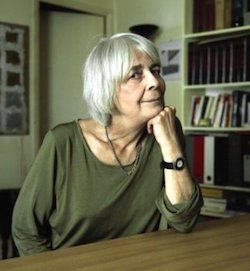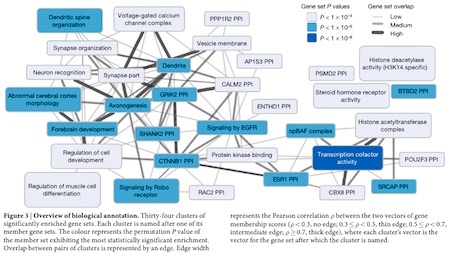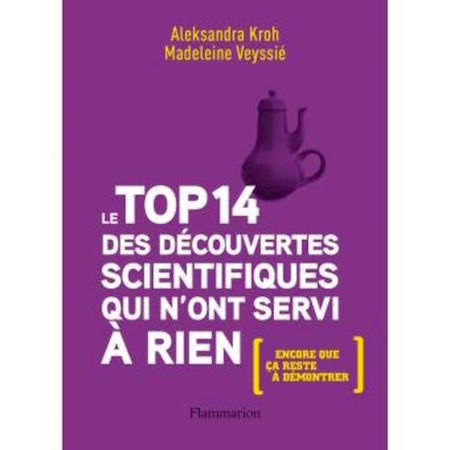Marc Abrahams's Blog, page 270
May 12, 2016
Further adventures in dung-beetle-navigation research
Rachel Feltman chronicles, in the Washington Post, some further adventures of the Ig Nobel Prize-winning dung beetle navigation researchers:
The humble dung beetle has a fantastic way of navigating the world
If you’re a dung beetle, you spend a good portion of your life dancing around on top of a ball made of poop – a ball of poop that, with any luck, will eventually become dinner. But the researchers who’ve devoted their lives to studying these coprophagic critters say the insects have a surprising adaptation: According to a study published Thursday in Current Biology, dung beetles can take “snapshots” of their surroundings and use them to navigate.
First, a dung beetle factoid you might not know: Scientists believe that they navigate at night using the visible portion of the Milky Way – that gorgeous strip of stars and dust that appears in a sky sans light pollution. Unsurprisingly, the finding that dung beetles stare at the stars was honored with an Ig Nobel Award…

‘Spock,’ ‘Joker,’ & ‘Mephisto’ eyebrows – avoidance techniques for aesthetic surgeons
 Aesthetic surgeons in the business of facial wrinkle reduction have noted that if one weakens the glabella muscle with injections of AbobotulinumtoxinA without also weakening the frontalis muscle, unwanted side effects can occur. Known in the trade as ‘Spock,’ ‘Joker,’ or ‘Mephisto’ eyebrows. These side effects can be avoided by also injecting the fontalis muscle with AbobotulinumtoxinA.
Aesthetic surgeons in the business of facial wrinkle reduction have noted that if one weakens the glabella muscle with injections of AbobotulinumtoxinA without also weakening the frontalis muscle, unwanted side effects can occur. Known in the trade as ‘Spock,’ ‘Joker,’ or ‘Mephisto’ eyebrows. These side effects can be avoided by also injecting the fontalis muscle with AbobotulinumtoxinA.
Detailed explanations are provided in the Aesthetic Surgery Journal, Volume 32, Issue 1, Supplement Pp. 8S – 29S, ‘Current Aesthetic Use of AbobotulinumtoxinA in Clinical Practice: An Evidence-Based Consensus Review’
Steering Committee: Corey Maas, MD, FACS; Michael A. C. Kane, MD; Vivian W. Bucay, MD, FAAD; Consensus Committee: Shawn Allen, MD; David J. Applebaum, MD; Leslie Baumann, MD; Sue Ellen Cox, MD; Julius W. Few, MD; John H. Joseph, MD; Z. Paul Lorenc, MD, FACS; Amir Moradi, MD; Mark S. Nestor, MD, PhD; Joel Schlessinger, MD; Technology Consultants: Mitchell Wortzman, PhD; Ira Lawrence, MD; Xiaoming Lin, RN, MS; and Diane Nelson, RN, MPH. [see note 1 below]
“Many patients desire complete immobilization of the glabellar complex to abolish all dynamic wrinkles, although some may wish to retain partial function. Injections should be made intramuscularly and usually perpendicular to the skin surface. Care should be used to avoid injecting superior to the target muscles, which can cause brow ptosis by weakening the frontalis. Injecting within 1 cm of the bony margin of the orbit or near the supraorbital notch can cause eyelid ptosis by weakening the levator palpebrae superioris; this complication can be alleviated with apraclonidine eye drops. If the frontalis is not weakened at the same time as the glabella, excessive brow elevation can occur. This effect, variously called ‘Spock,’ ‘Joker,’ or ‘Mephisto’ eyebrow, can be reversed by injecting approximately 5 U abobotulinumtoxinA or 2 U onabotulinumtoxinA into the frontalis above the point of highest eyebrow elevation.”
Notes:
[1] The paper’s authors provide a list of disclosures regarding their industry involvement – see below, ‘Disclosures’.
[2] The Aesthetic Surgery Journal also provides information on ‘Spock Ears’ [see photo above] ‘ Treatment of Prominent Ears with an Implantable Clip System: A Pilot Study’
Disclosures:
“Dr Maas is a paid researcher for Colbar LifeScience Ltd, Allergan Inc (Irvine, California), Medicis Inc (Scottsdale, Arizona), and Mentor LLC (Santa Barbara, California); a consultant for Merz Aesthetics Inc (San Mateo, California) Aesthetics Inc (San Mateo, California), Allergan Inc (Irvine, California), Mentor LLC (Santa Barbara, California), and Johnson & Johnson Inc (New Brunswick, New Jersey); a member of the speakers bureau for Merz Aesthetics Inc (San Mateo, California), Allergan Inc (Irvine, California), Integra Life Science Inc (Plainsboro, New Jersey), Lumenis Inc (Santa Clara, California) Inc (Santa Clara, California), Medicis Inc (Scottsdale, Arizona), and Johnson & Johnson Inc (New Brunswick, New Jersey); and a stockholder of Merz Aesthetics Inc (San Mateo, California), Allergan Inc (Irvine, California), Lumenis Inc (Santa Clara, California) Inc (Santa Clara, California), Medicis Inc (Scottsdale, Arizona), Mentor LLC (Santa Barbara, California), and Johnson & Johnson Inc (New Brunswick, New Jersey); Dr Kane is a paid advisor or consultant for Allergan Inc (Irvine, California) Inc, Merz Aesthetics Inc (San Mateo, California), Medical Inc, Medicis Inc (Scottsdale, Arizona), QMed LLC (Charlotte, North Carolina), and Stiefel Laboratories Inc (Triangle Park, North Carolina) Laboratories; a speaker or member of a speakers bureau for Allergan Inc (Irvine, California), Medicis Inc (Scottsdale, Arizona), QMed LLC (Charlotte, North Carolina), and sanofi-aventis Inc (Bridgewater, New Jersey); and a paid researcher for Coapt Systems Inc (Palo Alto, California), Medicis Inc (Scottsdale, Arizona), and Revance Therapeutics Inc (Newark, California) Therapeutics; he owns stock, stock options, or bonds from Allergan Inc (Irvine, California), Medicis Inc (Scottsdale, Arizona), and Revance Therapeutics Inc (Newark, California). Dr Bucay is a paid advisor or consultant for Medicis Inc (Scottsdale, Arizona), Allergan Inc (Irvine, California), Merz Pharmaceuticals LLC (Greensboro, North Carolina) Pharmaceuticals LLC, Syneron Medical Ltd (Irvine, California) Medical, Johnson & Johnson Inc (New Brunswick, New Jersey) Consumer Companies Inc, Johnson & Johnson Inc (New Brunswick, New Jersey) Pharmaceutical Research & Development, Valeant Pharmaceuticals North America, INC (Montreal, Quebec, Canada), Biopelle Division of Ferndale Laboratories Inc (Ferndale, Michigan), Novartis Pharmaceuticals Corporation Inc (Parsippany, New Jersey) Pharmaceuticals Corporation, and Elemé Medical Inc (Merrimack, New Hampshire) and a speaker or member of a speakers bureau for Medicis Inc (Scottsdale, Arizona), Allergan Inc (Irvine, California), Biopelle Division of Ferndale Laboratories Inc (Ferndale, Michigan), Elemé Medical Inc (Merrimack, New Hampshire), and Syneron Medical Ltd (Irvine, California) Medical Ltd. Dr Allen is a paid researcher and member of the speakers bureau for Medicis Inc (Scottsdale, Arizona). Dr Applebaum is a paid speaker and trainer for Medicis Inc (Scottsdale, Arizona). Dr Baumann is a paid researcher and advisory board member for Medicis Inc (Scottsdale, Arizona) and a researcher for Allergan Inc (Irvine, California). Dr Cox is a paid advisory board member, consultant, and researcher for Allergan Inc (Irvine, California) and Medicis Inc (Scottsdale, Arizona) and a paid researcher for Revance Therapeutics Inc (Newark, California). Dr Few is a paid advisor or consultant for Mentor LLC (Santa Barbara, California) Corporation, Allergan Inc (Irvine, California), Medicis Inc (Scottsdale, Arizona), Galderma Laboratories INC (Fort Worth, Texas)Laboratories, Merz Pharmaceuticals LLC (Greensboro, North Carolina) Pharmaceuticals, and Johnson & Johnson Inc (New Brunswick, New Jersey) Pharmaceutical Research & Development and a speaker or a member of a speakers bureau for Palomar Medical Technologies Inc (Burlington, Massachusetts). Dr Joseph is a paid national trainer, speaker, advisor, research and development board member, and paid researcher for Medicis Inc (Scottsdale, Arizona) and a researcher for the US Food and Drug Administration (Silver Spring, Maryland). Dr Lorenc is an advisor or consultant for Medicis Inc (Scottsdale, Arizona) and Johnson & Johnson Inc (New Brunswick, New Jersey) Pharmaceutical Research & Development. Dr Moraldi is a paid speaker, consultant, and advisory board member for Allergan Inc (Irvine, California), Medicis Inc (Scottsdale, Arizona), Skin Medica Inc (Carlsbad, California), and Merz Aesthetics Inc (San Mateo, California) Aesthetics Inc (San Mateo, California)-Merz Pharmaceuticals LLC (Greensboro, North Carolina) and a speaker-trainer for Sciton Inc (Palo Alto, California). Dr Nestor is a paid advisory board member for Medicis Inc (Scottsdale, Arizona), Galderma, Genentech Inc (San Francisco, California), Merz Pharmaceuticals LLC (Greensboro, North Carolina), and Beiersdorf Inc (Wilton, Connecticut); a consultant for Medicis Inc (Scottsdale, Arizona), Galderma, Ulthera Inc (Mesa, Arizona), Transdermal Technologies Inc (Palm Beach Gardens, Florida), and Erchonia Medical Inc (McKinney, Texas); a paid researcher for Medicis Inc (Scottsdale, Arizona), Galderma, Ulthera Inc (Mesa, Arizona), Transdermal Technologies Inc (Palm Beach Gardens, Florida), and Erchonia Medical Inc (McKinney, Texas); and a speaker for Ulthera Inc (Mesa, Arizona). Dr Schlessinger is a paid advisory board member or consultant for Abbott Pharmaceutical Inc (Waorcester, Massachusetts), Allergan Inc (Irvine, California), Amgen Inc (Thousand Oaks, California), Artes Biotechnology GmbH (Langenfeld, Germany), sanofi-aventis Inc (formerly Dermik; Bridgewater, New Jersey) (Bridgewater, New Jersey); Galderma, Genentech Inc (San Francisco, California), GSK/Stiefel Laboratories Inc (Triangle Park, North Carolina), Kythera Biopharmaceuticals Inc (Calabasas, California), Medicis Inc (Scottsdale, Arizona), Mentor LLC (Santa Barbara, California), Merz Pharmaceuticals LLC (Greensboro, North Carolina), Novartis Pharmaceuticals Corporation Inc (Parsippany, New Jersey), Obagi Medical Products Inc (Long Beach, California), and Ortho Pharma (Johnson & Johnson Inc (New Brunswick, New Jersey)); a researcher for 3M Pharma, Abbott Pharma, Allergan Inc (Irvine, California), Amgen Inc (Thousand Oaks, California), Astellas Pharma Inc (Northbrook, Illinois), Barrier Therapeutics Inc (Plainsboro, New Jersey), Biogen Idec Inc (Weston, Massachusetts), Janssen Biotech (formerly Centocor) Inc (Horsham, Pennsylvania), Clay-Park Labs Inc (Bronx, New York), Collagenex Pharmaceuticals Inc (Newtown, Pennsylvania), Stiefel Laboratories Inc (formerly Connetics; Triangle Park, North Carolina), sanofi-aventis Inc (formerly Dermik; Bridgewater, New Jersey), Laboratories Inc (Bridgewater, New Jersey); Bridgewater, New Jersey) Laboratories Inc (Bridgewater, New Jersey), Dow Pharmaceutical Sciences Inc (Petaluma, California), Lumenis Inc (Santa Clara, California) Inc (Santa Clara, California), Galderma, Genentech Inc (San Francisco, California), GSK/Stiefel Laboratories Inc (Triangle Park, North Carolina), Glenmark Pharmaceuticals Ltd (Andheri [E], Mumbai), HealthPoint Biotherapeutics Ltd (Fort Worth, Texas), Amgen Inc (Thousand Oaks, California) Inc (formerly Immunex; Thousand Oaks, California), Kythera Biopharmaceuticals Inc (Calabasas, California), Medicis Inc (Scottsdale, Arizona), Mentor LLC (Santa Barbara, California), Merz Pharmaceuticals LLC (Greensboro, North Carolina), Novartis Pharmaceuticals Corporation Inc (Parsippany, New Jersey), Novum Pharmaceutical LLC (Pittsburgh, Pennsylvania), Nucryst Pharmaceuticals Corp (Wakefield, Massachusetts), Ortho Pharma (Johnson & Johnson Inc (New Brunswick, New Jersey)), Penederm Inc (Foster City, California), Perrigo Inc (Allegan, Michigan), Pfizer Inc (New York, New York), QLT Inc (Vancouver, British Columbia, Canada), Regeneration Pharmaceuticals Inc (New York, New York) AG, Sandoz GmbH (a Novartis company; Holzkirchen, Germany), Merck (formerly Merck (formerly Schering-Plough) Inc (Whitehouse Station, New Jersey)) Inc (Whitehouse Station, New Jersey), Stiefel Laboratories Inc (Triangle Park, North Carolina) Labs, and UBC/Vitae; and a stockholder in Allergan Inc (Irvine, California), Revance Therapeutics Inc (Newark, California), Excel Cosmeceuticals Inc (Bloomfield Hills, Michigan), Medicis Inc (Scottsdale, Arizona), and Obagi Medical Products Inc (Long Beach, California). Dr Wortzman is an employee and shareholder of Medicis Inc (Scottsdale, Arizona). Dr Lawrence, Ms Lin, and Ms Nelson are employees of Medicis Inc (Scottsdale, Arizona).”

May 11, 2016
Do a person’s genes predict how high they will go in school? — The 3.2% solution
Scholars have wondered whether (and in some cases, assumed that) success in schools comes largely from the good genes a person inherits. A new study of scholars and their genes provides evidence that YES, IT DOES, sort of, a little bit, maybe. The study is powerful — its authors tell us exactly how powerful.
The study is “Genome-wide association study identifies 74 loci associated with educational attainment,” just published online in the journal Nature. It’s likely to get a lot of attention.
Here’s how the gang of authors sums up their work: “we report the results of a genome-wide association study (GWAS) for educational attainment [in] 293,723 individuals, and a replication study in an independent sample of 111,349 individuals… We identify 74 genome-wide significant loci associated with the number of years of schooling completed.”
Here’s perhaps the most impressive revelation in the study: “the mean predictive power of a polygenic score constructed from all measured SNPs is 3.2%”.
BONUS: Here’s additional detail from the study. The complexity of this detail will, for many readers, add to the cogno-intellectual persuasiveness of the study:
BONUS: Here are the co-authors of the study:
Aysu Okbay, Jonathan P. Beauchamp, Mark Alan Fontana, James J. Lee, Tune H. Pers, Cornelius A. Rietveld, Patrick Turley, Guo-Bo Chen, Valur Emilsson, S. Fleur W. Meddens, Sven Oskarsson, Joseph K. Pickrell, Kevin Thom, Pascal Timshel, Ronald de Vlaming, Abdel Abdellaoui, Tarunveer S. Ahluwalia, Jonas Bacelis, Clemens Baumbach, Gyda Bjornsdottir, Johannes H. Brandsma, Maria Pina Concas, Jaime Derringer, Nicholas A. Furlotte, Tessel E. Galesloot, Giorgia Girotto, Richa Gupta, Leanne M. Hall, Sarah E. Harris, Edith Hofer, Momoko Horikoshi, Jennifer E. Huffman, Kadri Kaasik, Ioanna P. Kalafati, Robert Karlsson, Augustine Kong, Jari Lahti, Sven J. van der Lee, Christiaan deLeeuw, Penelope A. Lind, Karl-Oskar Lindgren, Tian Liu, Massimo Mangino, Jonathan Marten, Evelin Mihailov, Michael B. Miller, Peter J. van der Most, Christopher Oldmeadow, Antony Payton, Natalia Pervjakova, Wouter J. Peyrot, Yong Qian, Olli Raitakari, Rico Rueedi, Erika Salvi, Börge Schmidt, Katharina E. Schraut, Jianxin Shi, Albert V. Smith, Raymond A. Poot, Beate St Pourcain, Alexander Teumer, Gudmar Thorleifsson, Niek Verweij, Dragana Vuckovic, Juergen Wellmann, Harm-Jan Westra, Jingyun Yang, Wei Zhao, Zhihong Zhu, Behrooz Z. Alizadeh, Najaf Amin, Andrew Bakshi, Sebastian E. Baumeister, Ginevra Biino, Klaus Bønnelykke, Patricia A. Boyle, Harry Campbell, Francesco P. Cappuccio, Gail Davies, Jan-Emmanuel De Neve, Panos Deloukas, Ilja Demuth, Jun Ding, Peter Eibich, Lewin Eisele, Niina Eklund, David M. Evans, Jessica D. Faul, Mary F. Feitosa, Andreas J. Forstner, Ilaria Gandin, Bjarni Gunnarsson, Bjarni V. Halldórsson, Tamara B. Harris, Andrew C. Heath, Lynne J. Hocking, Elizabeth G. Holliday, Georg Homuth, Michael A. Horan, Jouke-Jan Hottenga, Philip L. de Jager, Peter K. Joshi, Astanand Jugessur, Marika A. Kaakinen, Mika Kähönen, Stavroula Kanoni, Liisa Keltigangas-Järvinen, Lambertus A. L. M. Kiemeney, Ivana Kolcic, Seppo Koskinen, Aldi T. Kraja, Martin Kroh, Zoltan Kutalik, Antti Latvala, Lenore J. Launer, Maël P. Lebreton, Douglas F. Levinson, Paul Lichtenstein, Peter Lichtner, David C. M. Liewald, LifeLines Cohort Study, Anu Loukola, Pamela A. Madden, Reedik Mägi, Tomi Mäki-Opas, Riccardo E. Marioni, Pedro Marques-Vidal, Gerardus A. Meddens, George McMahon, Christa Meisinger, Thomas Meitinger, Yusplitri Milaneschi, Lili Milani, Grant W. Montgomery, Ronny Myhre, Christopher P. Nelson, Dale R. Nyholt, William E. R. Ollier, Aarno Palotie, Lavinia Paternoster, Nancy L. Pedersen, Katja E. Petrovic, David J. Porteous, Katri Räikkönen, Susan M. Ring, Antonietta Robino, Olga Rostapshova, Igor Rudan, Aldo Rustichini, Veikko Salomaa, Alan R. Sanders, Antti-Pekka Sarin, Helena Schmidt, Rodney J. Scott, Blair H. Smith, Jennifer A. Smith, Jan A. Staessen, Elisabeth Steinhagen-Thiessen, Konstantin Strauch, Antonio Terracciano, Martin D. Tobin, Sheila Ulivi, Simona Vaccargiu, Lydia Quaye, Frank J. A. van Rooij, Cristina Venturini, Anna A. E. Vinkhuyzen, Uwe Völker, Henry Völzke, Judith M. Vonk, Diego Vozzi, Johannes Waage, Erin B. Ware, Gonneke Willemsen, John R. Attia, David A. Bennett, Klaus Berger, Lars Bertram, Hans Bisgaard, Dorret I. Boomsma, Ingrid B. Borecki, Ute Bültmann, Christopher F. Chabris, Francesco Cucca, Daniele Cusi, Ian J. Deary, George V. Dedoussis, Cornelia M. van Duijn, Johan G. Eriksson, Barbara Franke, Lude Franke, Paolo Gasparini, Pablo V. Gejman, Christian Gieger, Hans-Jörgen Grabe, Jacob Gratten, Patrick J. F. Groenen, Vilmundur Gudnason, Pim van der Harst, Caroline Hayward, David A. Hinds, Wolfgang Hoffmann, Elina Hyppönen, William G. Iacono, Bo Jacobsson, Marjo-Riitta Järvelin, Karl-Heinz Jöckel, Jaakko Kaprio, Sharon L. R. Kardia, Terho Lehtimäki, Steven F. Lehrer, Patrik K. E. Magnusson, Nicholas G. Martin, Matt McGue, Andres Metspalu, Neil Pendleton, Brenda W. J. H. Penninx, Markus Perola, Nicola Pirastu, Mario Pirastu, Ozren Polasek, Danielle Posthuma, Christine Power, Michael A. Province, Nilesh J. Samani, David Schlessinger, Reinhold Schmidt, Thorkild I. A. Sørensen, Tim D. Spector, Kari Stefansson, Unnur Thorsteinsdottir, A. Roy Thurik, Nicholas J. Timpson, Henning Tiemeier, Joyce Y. Tung, André G. Uitterlinden, Veronique Vitart, Peter Vollenweider, David R. Weir, James F. Wilson, Alan F. Wright, Dalton C. Conley, Robert F. Krueger, George Davey Smith, Albert Hofman, David I. Laibson, Sarah E. Medland, Michelle N. Meyer, Jian Yang, Magnus Johannesson, Peter M. Visscher, Tõnu Esko, Philipp D. Koellinger, David Cesarini & Daniel J. Benjamin.

The physics of skulking and falling cats [podcast 63]
The twists and turns of explaining how cats twist and turn when they fall from above or skulk about — that’s what fills this week’s Improbable Research podcast.
SUBSCRIBE on Play.it, iTunes, or Spotify to get a new episode every week, free.
This week, Marc Abrahams — with dramatic readings by Chris Cotsapis — tells about:
The Falling Cat Phenomenon — Kane, T. R., and M. P. Scher (1969). ‘A Dynamical Explanation of the Falling Cat Phenomenon.’ International Journal of Solids and Structures 5: 663–70.
Advanced Physics of the Falling Cat — Montgomery, Richard (1993). ‘Gauge Theory of the Falling Cat.’ Fields Institute Communications, 1: 193–218.
Cats skulking —Bishop, Kristin L., Anita K. Pai, and Daniel Schmitt. “Whole body mechanics of stealthy walking in cats.” PLoS One 3, no. 11 (2008): e3808. Here is a video, part of the study, of a skulking cat:

The mysterious John Schedler or the shadowy Bruce Petschek perhaps did the sound engineering this week.
The Improbable Research podcast is all about research that makes people LAUGH, then THINK — real research, about anything and everything, from everywhere —research that may be good or bad, important or trivial, valuable or worthless. CBS distributes it, on the CBS Play.it web site, and on iTunes and Spotify).

May 10, 2016
Mooning the Ig
In the year 2000, the Ig Nobel Prize for economics was awarded to The Reverend Sun Myung Moon, for bringing efficiency and steady growth to the mass-marriage industry, with, according to his reports, a 36-couple wedding in 1960, a 430-couple wedding in 1968, an 1800-couple wedding in 1975, a 6000-couple wedding in 1982, a 30,000-couple wedding in 1992, a 360,000-couple wedding in 1995, and a 36,000,000-couple wedding in 1997. Here’s video of the 1992 wedding:
 Reverend Moon (pictured on the right, in this photo) also created a business, in the shape of a newspaper, called the Washington Times.
Reverend Moon (pictured on the right, in this photo) also created a business, in the shape of a newspaper, called the Washington Times.
Today, May 10, 2016, the Washington Times celebrated the Ig Nobel Prizes in a partial-fact-filled article headlined “Feds pay researcher to have bee sting his penis.” That Washington Times article — perhaps from modesty, perhaps because of a typographical error — does not mention that Reverend Moon was himself an Ig Nobel Prize winner.

The medical dilemma posed by a Mobile Phone in the Stomach
When a mobile telephone lodges in a person’s stomach, it can cease to be quite so mobile. A new medical paper offers proof of that:
“An Ingested Mobile Phone in the Stomach May Not Be Amenable to Safe Endoscopic Removal Using Current Therapeutic Devices: A Case Report,” Obinna Obinwa, David Cooper, and James M. O’Riordan, International Journal of Surgery Case Reports, vol. 22, 2016, pp. 86–89. (Thanks to Tim Radford for bringing this to our attention.) The authors, at the Adelaide and Meath Hospital, Dublin, Ireland, report:
A 29-year old male prisoner was brought in by ambulance to the Emergency Department with a four-hour history of vomiting, having claimed to have swallowed a foreign object six hours earlier that day….
The failure of endoscopy to remove the mobile phone, in this case, highlights the limitations of this approach. The traditional sequence of conservative approach, endoscopy and surgery when endoscopy fails is challenged. This observation has raised a new question: should clinicians proceed directly to surgery when clinical observation fails in these cases or should endoscopy still be attempted?
Here’s further detail from the study:

BONUS: The video below, prepared by persons not connected with the medical case described above, tells “How to track your mobile phone anywhere in the world”:

May 9, 2016
Another spirited new book about the Ig Nobel Prizes
There’s another spirited new book about the Ig Nobel Prizes.
 Physicists Aleksandra Kroh [pictured here] and Madeleine Veyssié gave a good, long, gimlet gaze at fourteen (of the 250) Ig Nobel Prize winners, and then served up their deepest professional and personal opinions as to the merits and implications of each of those fourteen. They call the book Le Top 14 des découvertes scientifiques qui n’ont servi à rien. It’s published by Flammarion.
Physicists Aleksandra Kroh [pictured here] and Madeleine Veyssié gave a good, long, gimlet gaze at fourteen (of the 250) Ig Nobel Prize winners, and then served up their deepest professional and personal opinions as to the merits and implications of each of those fourteen. They call the book Le Top 14 des découvertes scientifiques qui n’ont servi à rien. It’s published by Flammarion.
In Le Monde, Hervé Morin reviews the book:
Voici un credo réjouissant : « Faire rire d’abord, réfléchir ensuite. » C’est celui de Marc Abrahams, créateur des Ig Nobel, qui récompensent chaque année à Harvard des travaux de recherche improbables, et des annales qui les compilent. Si cette manifestation remplit parfaitement le premier volet de sa proposition, les physiciennes Aleksandra Kroh et Madeleine Veyssié estiment qu’elle ne donne pas suffisamment matière à penser. Aussi ont-elles sélectionné 14 prix Ig Nobel, pour raconter comment la science se fait et quelles personnalités peuvent s’y révéler.
Précisons d’emblée que le titre de leur ouvrage, Le Top 14 des découvertes scientifiques qui n’ont servi à rien, ne correspond pas totalement à son contenu….
On RFI, Caroline Lachowski interviews co-author Madeleine Veyssié: “Quelles sont les découvertes les plus improbables?”

‘Unperformable’ music – an ontological approach
 There are some musical works which are, in some way or another, impossible to perform, viz. they are ‘Unperformable’. But how many varieties of unperformable music are there? Professor Wesley D. Cray of Grand Valley State University, Allendale, US, investigates the subject in a new paper for the British Journal of Aesthetics, finding that there are, at the very least, several types. For example:
There are some musical works which are, in some way or another, impossible to perform, viz. they are ‘Unperformable’. But how many varieties of unperformable music are there? Professor Wesley D. Cray of Grand Valley State University, Allendale, US, investigates the subject in a new paper for the British Journal of Aesthetics, finding that there are, at the very least, several types. For example:
• Medical Unperformability: “Given biological limitations, no actual organism can generate a genuine performance.” e.g. Ligeti’s Étude No. 14A: Coloana fara sfârşit (Column without End)
• Nomic Unperformability: “Given the actual laws of nature, there can be no genuine performances.” e.g. Bull of Heaven’s 2014 work 310: ΩΣPx0(2^18×5^18)p*k*k*k, (with a running time of 3.343 quindecillion years)
• Logical Unperformability: “Given logical constraints, there can be no genuine performances.” e.g. Tribute to I.F. Kilmister: (three musicians each, individually and simultaneously, play a single note [on electric guitar, electric bass, and drum kit, respectively] louder than the other two play their notes.)
The professor’s paper also alerts us to ‘Unperformable Works for Performance’ and ‘Trivial Unperformabilities’, going on to argue that :
“- the very possibility of such works is ontologically significant. In particular, the possibility of these works raises serious problems for type-theoretic accounts of the ontology of music as well as certain mereological or constitution-based accounts.”
see: “Unperformable Works and the Ontology of Music” (2016, British Journal of Aesthetics, 56(1): 67-81). A full copy may be found here.
Question [optional] Do you know of any other musical works which can’t be performed? Alternatively, any which can, but which nevertheless shouldn’t be?

May 8, 2016
Early investigation of piezoelectric effects in chicken feathers
Modern investigators of piezoelectric effects in chicken feathers owe a tip of the beak to the people involved in this early attempt:
“A preliminary investigation of piezoelectric effects in chicken feathers,” W. Van Dam, J.A. Tanner, and C. Romero-Sierra, IEEE Transactions on Biomedical Engineering, vol. 17, no. 1, 1970, pp. 71-71. The authors explain:
“Piezoelectric effects have been measured experimentally in chicken feathers. Quill sections subjected to alternating electric stress respond with an axial twisting motion that has a well-defined resonant mode. Conversely, subjecting the quill to mechanical stress produced an electrical signal.”

May 7, 2016
Red herring mystery solved?

An example of the usage of red herring
Michael Quinion says he has solved the mystery of the red herring—how the phrase “red herring” came to have its current meaning:
The matter is now cleared up as the result of a pair of articles in the October 2008 edition of Comments on Etymology, edited by Professor Gerald Cohen at the Missouri University of Science and Technology. One article reprints notes Prof Cohen made on the term in the same journal in 2000, the other is by Robert Scott Ross, who suggests a plausible origin for the expression. Their findings are supported by the Oxford English Dictionary’s revised entry for red herring, which is to appear online shortly….
The retrieval of that explanation we leave to the reader as an exercise.
BONUS: We leave as a further exercise for the reader the finding of the answer to the question “Who is the editor of Comments on Etymology“?
BONUS: “UMR professor writes book on origin of ‘hot dog’”
BONUS: A recipe for red herring:

Marc Abrahams's Blog
- Marc Abrahams's profile
- 14 followers






